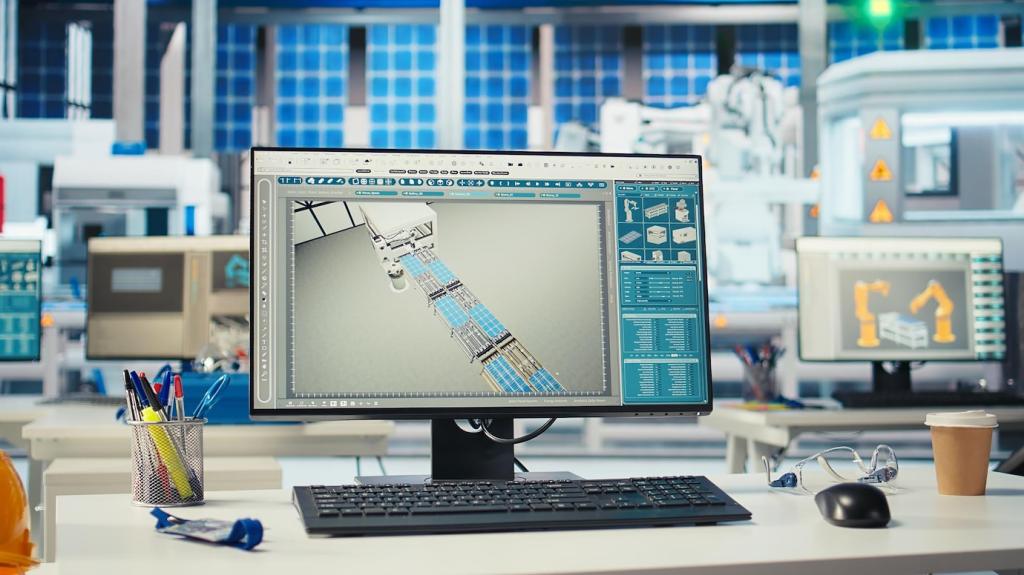Today’s chosen theme: Innovations in Renewable Energy for Eco-Friendly Production. Step into a future where factories hum on sunshine, warehouses sip wind, and heat comes from clean molecules. Join our community, share your ideas, and subscribe for weekly breakthroughs.

Solar That Works as Hard as Your Factory
Tandem cells surpassing 30% lab efficiency are moving from research headlines to bankable roadmaps, squeezing more electricity out of the same footprint. For manufacturers, that means denser power on rooftops, fewer structural upgrades, and faster paybacks tied to dependable, clean generation.
Solar That Works as Hard as Your Factory
By pairing solar arrays with pollinator habitats or shade‑tolerant crops around industrial sites, companies produce clean power while restoring biodiversity. The visible stewardship builds community trust, softens permitting hurdles, and makes eco‑friendly production feel tangible, local, and proudly shared.


Wind Reimagined: Smarter Turbines, Quieter Yields
High‑resolution wind mapping, onboard sensors, and digital twins predict component fatigue before it hurts output. Operators fine‑tune yaw settings and blade pitch, squeezing extra kilowatt‑hours with less downtime. Cleaner energy, fewer truck rolls, and a steadier production schedule follow naturally.
Wind Reimagined: Smarter Turbines, Quieter Yields
Where space is constrained and turbulence is messy, vertical‑axis turbines can quietly harvest lower‑height winds along warehouse rows. They complement rooftop solar, feed microgrids, and preserve sightlines. Share your trials measuring acoustic impact, safety clearances, and maintenance intervals in urban settings.

Electrolyzer advances cut costs and boost flexibility
New PEM and AEM electrolyzers ramp quickly, soaking up cheap renewable surpluses and turning them into hydrogen on demand. Higher stack durability and smarter balance‑of‑plant design reduce downtime, enabling round‑the‑clock clean fuel for backup power, forklifts, and process heat.

Clean combustion for high‑heat kilns and furnaces
Hydrogen combustion can replace fossil fuels in energy‑intense kilns, with careful burner design to manage flame speed and NOx. Hybrid approaches combine electric preheating with hydrogen finishing, preserving product specs while dramatically shrinking the carbon footprint of heat‑driven lines.

LFP delivers robust cycle life for frequent charge‑discharge near production peaks, while sodium‑ion offers cobalt‑free resilience and promising cold‑weather performance. Mixing chemistries across use cases—backup, peak shaving, intraday shifting—reduces risk, stabilizes costs, and keeps your line humming during grid hiccups.

Electrically heated ceramic or graphite blocks store excess renewable power as heat, then release it steadily to ovens and dryers. This approach avoids cycling boilers and slashes gas use, while delivering the stable temperatures sensitive materials demand for consistent product quality.

Using surplus renewable power to lift heavy blocks, then generating electricity as they descend, offers long life with simple mechanics. Industrial sites already have cranes, expertise, and space—turning familiar equipment into a durable, low‑maintenance energy buffer for late shifts.


This is the heading
Lorem ipsum dolor sit amet, consectetur adipiscing elit. Ut elit tellus, luctus nec ullamcorper mattis, pulvinar dapibus leo.

This is the heading
Lorem ipsum dolor sit amet, consectetur adipiscing elit. Ut elit tellus, luctus nec ullamcorper mattis, pulvinar dapibus leo.



